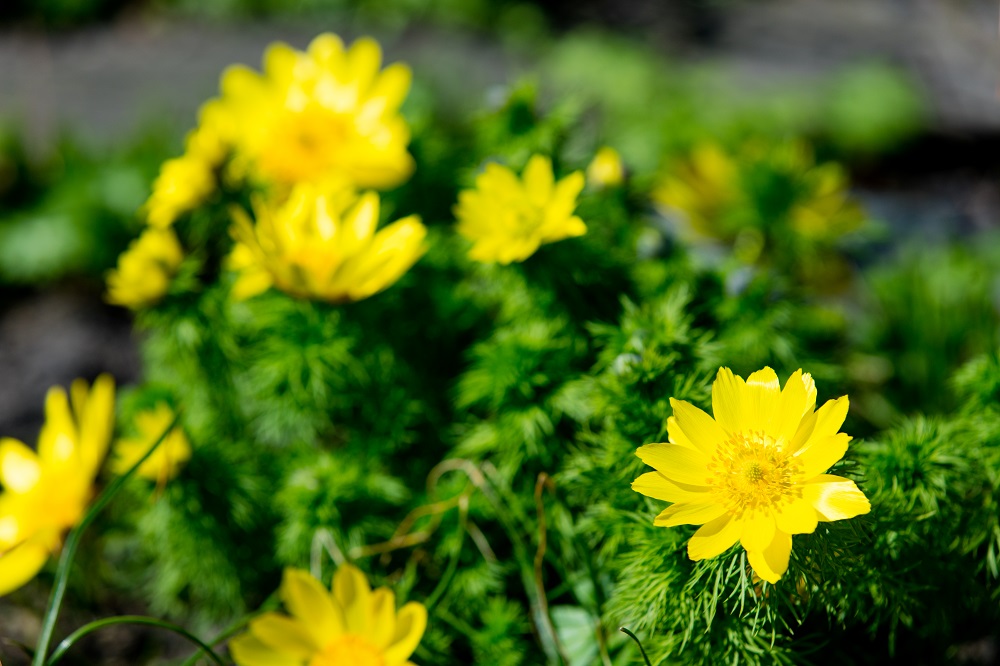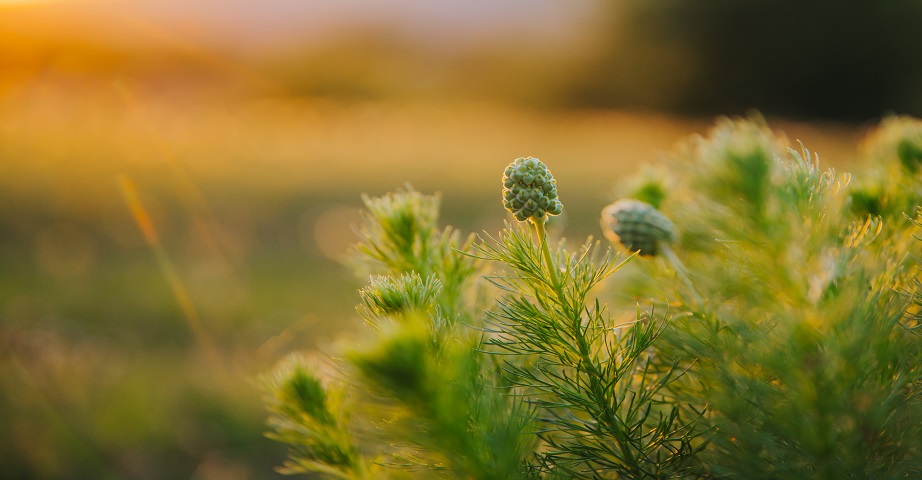Spring pheasant's eye - properties, components and characteristics

Spring pheasant's eye is a perennial that occurs naturally in Europe and Asia, and in Poland it is considered a plant under strict species protection. It is a small herb that shimmers with intense yellow flowers in spring. Spring adonis is used in gardening, and formerly it was also used in folk medicine or herbal medicine. What properties does the plant have? Is the use of spring pheasant's eye safe?
Summary
Spring pheasant's eye- description and characteristics
Spring pheasant's eye (from lat. Adonis vernalis L.) is a long-lived perennial belonging to the Ranunculaceae family, often also called adonis, the eye of a pheasant or a false hellebore. The plant naturally occurs in Europe and Asia, and in Poland, where it is a rare perennial and it is a strictly protected species.
The spring adonis grows on fertile, sunny soils rich in calcium. It is a herbaceous plant that can reach a maximum of 40 cm in height. It is characterized by a simple and poorly branched stem and feathered leaves, whose leaves laminae are usually naked. The spring adonis blooms in the spring, from April to May - then at the top of the stalk of the plant can be found single flowers of yellow colour. The fruit of the plant are small nuts collected in a collective fruit, which looks like blackberry. Herbal raw material is considered to be the flowering herb of spring pheasant's eye, which is distinguished by a wealth of valuable ingredients.
Spring adonis - properties and composition
The spring adonis herb, which is used in natural medicine and herbal medicine, contains numerous cardenolide glycosides, also called cardiac glycosides, such as adonitoxin, adonitoxol or cimarin, as well as flavonoids, such as luteolin, vitexin or orientin. In addition, the plant can also find minerals, sugar alcohol, carotenoids, adonitol or coumarins.
The presence of the above-mentioned components means that spring pheasant's eye can affect the work of the cardiovascular system, increasing the strength of contraction of the heart muscle, while reducing its frequency. This makes the heart pump more blood per unit of time, and the interval between contractions can last longer.
In addition, the spring adonis can have diuretic and anti-swelling properties, and can also have a calming, antibacterial and anti-inflammatory effect. However, it is worth knowing that due to the low affinity for plasma proteins, spring pheasant's eye is not accumulated in the body, and its effect on the human body is short-lived. In addition, it should be noted that all parts of spring adonis are considered poisonous, and the use of the plant can only take place under the supervision of a doctor, as only then it seems a completely safe practice.

Use of spring pheasant's eye
Spring pheasant's eye can be found in gardens where it is used to create multi-coloured, spring flowerbeds, in which it shimmers with yellow colouration. The plant can also be found on rock gardens, where it creates attractive compositions in the company of other flowers. At the same time, spring adonis is a perennial, which was formerly used in folk medicine and herbal medicine, in particular as a support for cardiovascular ailments, as well as a diuretic and anti-swelling specific.
However, it should be remembered that spring adonis herb is a strong raw material that should only be used under the supervision of a doctor. Therefore, currently the plant is available only on prescription in the form of herb or multi-component tincture, in which it is one of the valuable compounds.
Spring adonis - side effects and contraindications for use
Spring pheasant's eye, although it can be helpful in various types of ailments, is a highly poisonous plant, which is why it can be used only under the care of a doctor and according to his recommendations. Improper dosage of spring adonis can be associated with numerous side effects - than can be observed nausea, vomiting, cramps, as well as visual disturbances, slow heart rate or even cardiac arrest.
People who take diuretics, antiarrhythmics, laxatives or corticosteroid pharmaceuticals should back out of preparations containing spring adonis herb, as the plant may increase the effect of drugs and increase the likelihood of undesirable symptoms.

